Hong Kong ensemble decodes resonance of ageless Mogao Grottoes
From:XinhuaAuthor: 2024-01-02 15:45

Members of the Hong Kong Gaudeamus Dunhuang Ensemble perform during the opening of the "Hong Kong Palace Performing Showtime Carnival" in Hong Kong, south China, Nov. 26, 2023. (Xinhua/Chen Duo)
As the orchestra filled the air with enchanting melodies that seemed to echo from centuries past, the vibrant fusion of cosmopolitan Hong Kong and Gobi Desert oasis Dunhuang in remote northwest China breathed life into ancient murals, creating a mesmerizing spectacle.
At the recent opening of the "Hong Kong Palace Performing Showtime Carnival," young musicians played ancient instruments while giant murals from the Mogao Grottoes flickered on the big screen.
Like a vivid tapestry unfolding before the audience's eyes, the music intertwined with the rich hues and intricate brushstrokes, awakening the dormant figures and transporting listeners through time.
The performance was a testament to the enduring power of art and culture to bridge time and space, connecting the present with the past and creating a sense of wonder and awe.
Driven by a profound commitment to reviving and preserving Dunhuang's rich cultural legacy, the Hong Kong Gaudeamus Dunhuang Ensemble is infusing renewed vitality into the ancient melodies enshrined within the murals.
MOGAO'S ENDURING INSPIRATION
Leonie Ki, the ensemble's honorary director and founder, fell in love with Dunhuang during her first visit in 2010, and since then, she has been there 15 times in the past 13 years.
The Mogao Grottoes, located in Dunhuang in northwest China's Gansu Province, is a United Nations Educational, Scientific and Cultural Organization (UNESCO) World Heritage Site and home to a vast collection of Buddhist artworks. More than 2,000 colored sculptures and 45,000 square meters of murals are housed in 735 caves, carved into the cliffs by ancient worshippers.
In October 2017, Ki led a group of aspiring young musicians to visit the grottoes, many of whom were seeing them for the first time.
It was Ki's first time entering Cave 112, which was dimly lit and only allowed four people inside at a time. They had to be extremely careful not to touch or damage the murals, which featured the famous image of the "playing pipa behind the back."
If the first rock-and-roller who played an electric guitar behind his back thought he had invented something groundbreaking, he would have been surprised to discover pictorial evidence from Cave 112, dating back 1,200 years to the middle Tang Dynasty.
In this depiction, an entertainer joyfully dances amidst an orchestra, gracefully maneuvering a pipa (lute) behind her back, all while standing barefoot on a carpet.
Tears welled up in the eyes of several young girls as they sat at the dinner table. When asked the cause of their sudden outpouring of emotion, they revealed that the mesmerizing murals had left them both astonished and deeply moved. It was at that very moment that Ki, inspired by this profound experience, resolved to establish an orchestra.
The captivating allure of Dunhuang's rich cultural heritage had entranced her, as had the unwavering commitment of those who came before her, such as renowned Chinese painter Chang Shuhong and archaeologist Fan Jinshi. These stalwart guardians had dedicated their lives to upholding the indomitable "Mogao Spirit" that epitomizes perseverance amidst the desert's unforgiving terrain, prompting Ki's profound admiration.
Thus, in May 2018, the Hong Kong Gaudeamus Dunhuang Ensemble was born. Merely four months later, they took the stage as representatives of Hong Kong at the esteemed 3rd Silk Road (Dunhuang) International Cultural Expo, delivering a mesmerizing performance at the illustrious Dunhuang Grand Theater.
Their journey reached new heights when an invitation arrived from Wang Xudong, the former director of the Dunhuang Academy. The music group was bestowed the honor of performing in front of the iconic "nine-story building" in the Mogao Grottoes. This distinction firmly established them as the solitary performance ensemble hailing from Hong Kong to receive such remarkable recognition.
Despite the chilly September air that swept through Dunhuang, the musicians, clad in their lightweight performance attire, fearlessly took to the open-air stage.
Ki understood the significance of this moment -- a resounding testament to the unwavering support bestowed upon the music group, serving as a tremendous source of inspiration.
MELODIES REKINDLE MILLENNIUM SPLENDOR
Following the prevalent depictions found in the murals, the orchestra took shape with eight musicians and two composers. They meticulously selected wind and percussion instruments commonly featured in the artwork, including the evocative curved-neck lute and the resonant mouth organ, among other meticulously replicated ancient instruments.
As the ensemble gathered, a profound question lingered: what melodies should resonate through the air? How does Dunhuang music truly manifest itself when it has remained unheard by contemporary ears?
In the early 20th century, a treasure trove of ancient documents and 25 musical scores from the Tang Dynasty were unearthed from the depths of the Dunhuang Caves. However, due to the absence of comprehensive musical notation, the true essence of these compositions remained elusive.
Kam Shing-hei, the artistic coordinator and composer-in-residence of the ensemble, undertook his inaugural artistic pilgrimage to Dunhuang during his sophomore year at the Hong Kong Academy for Performing Arts.
"At that moment, the stories concealed within those murals eluded my comprehension, yet their visual allure emanated a profound musical essence. The compositions, hues, and strokes bestowed upon me a cornucopia of melodic inspiration," he reminisced.
Gradually, he unraveled that composition requires not only an understanding of music theory and performance techniques but also a profound grasp of the cultural nuances underpinning it.
"At first, I relied on my own knowledge of music theory and my familiarity with Western music to create Chinese traditional compositions. The melodies resonated pleasingly, and the musicians appreciated them, but they encountered difficulties in their execution."
For instance, Western music often adheres to a more "concrete" structure in its composition, while traditional Chinese music accentuates "rhythm," allowing ample room for musicians and instruments to express themselves freely.
Felissa Chan, one of the ensemble's early members, humorously expressed her surprise at staying with the group for five years. The most significant transformation for her was shifting her focus from solely playing the pipa to actively seeking out books and research materials to delve into the music's history and culture.
During one performance, Chan participated in a trio piece featuring the curved-neck lute, the Tang Dynasty sheng (a mouth-blown polyphonic free reed instrument), and the xun (a globular, vessel flute), among other musicians.
"Unlike the regular pipa, the curved-neck lute is played horizontally, yielding a poignant sound that evokes a sense of vicissitude," said Chan.
Kam has begun inviting more composers to create a diverse array of works. They continuously innovate their performances, collaborating with multimedia elements on stage and presenting interactive art installations in public spaces, thus engaging with a wider audience.
"In Dunhuang culture, I discovered my true identity and the stories I can narrate through these instruments," Kam reflected. "I am grateful to have grown alongside the entire ensemble."
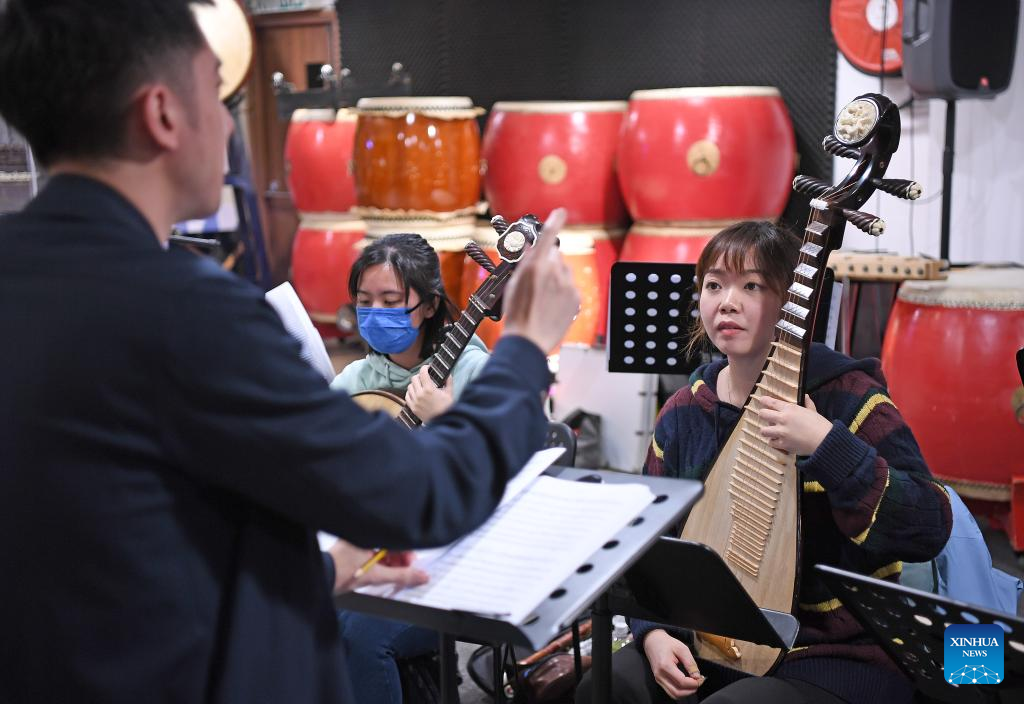
Felissa Chan (R), a pipa player of the Hong Kong Gaudeamus Dunhuang Ensemble, rehearses in Hong Kong, south China, Dec. 18, 2023. (Xinhua/Chen Duo)
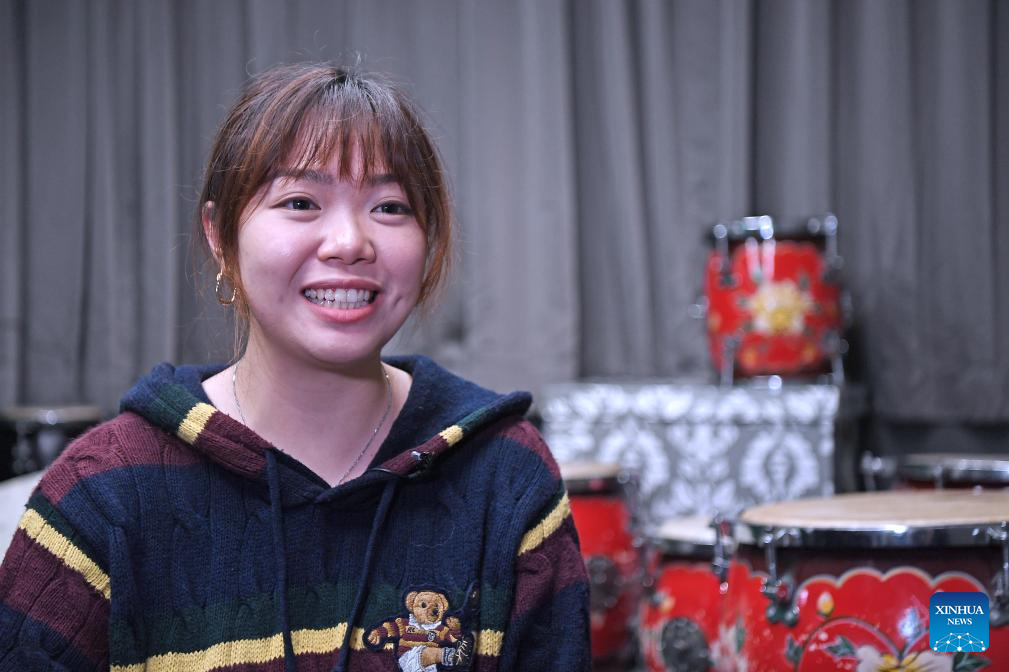
Felissa Chan, a pipa player of the Hong Kong Gaudeamus Dunhuang Ensemble, receives an interview with Xinhua in Hong Kong, south China, Dec. 18, 2023. (Xinhua/Chen Duo)
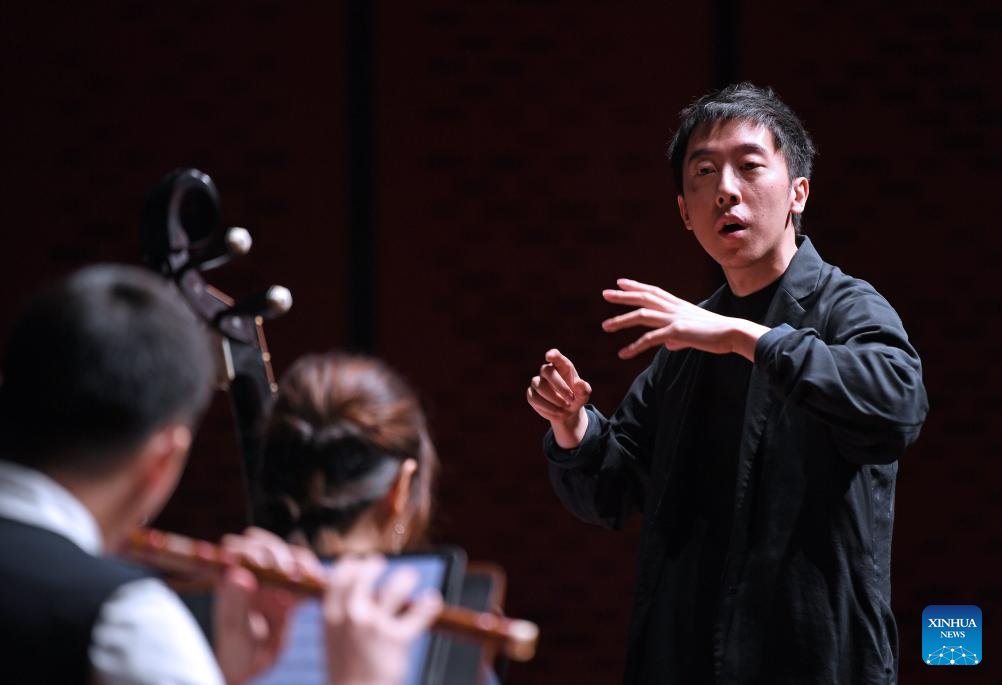
Kam Shing-hei, the artistic coordinator and composer-in-residence of the Hong Kong Gaudeamus Dunhuang Ensemble, conducts the orchestra during the opening of the "Hong Kong Palace Performing Showtime Carnival" in Hong Kong, south China, Nov. 26, 2023. (Xinhua/Chen Duo)
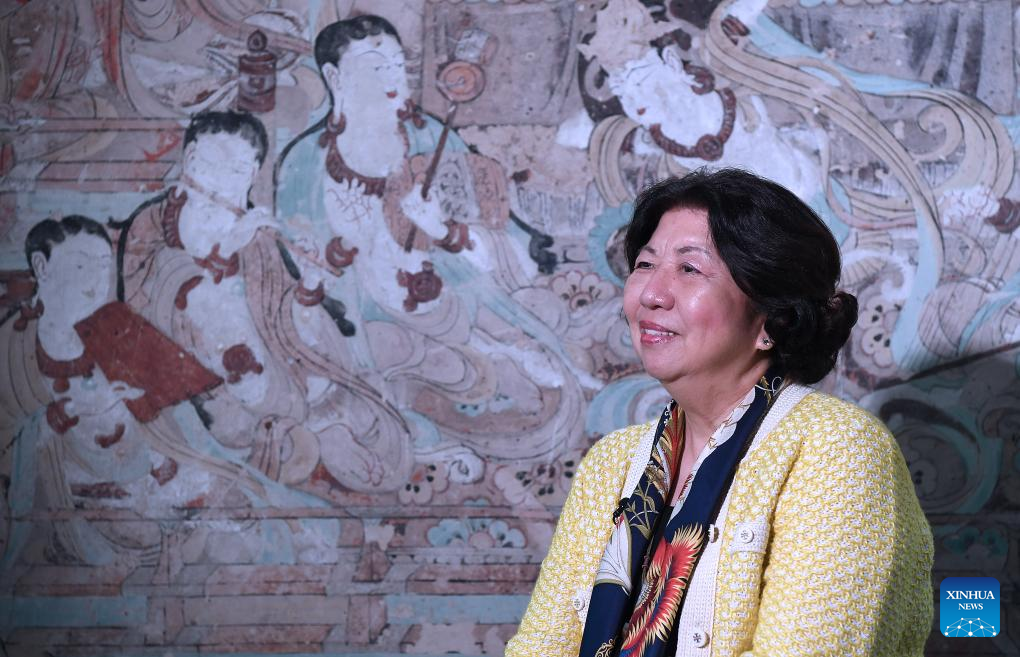
Leonie Ki, the honorary director and founder of the Hong Kong Gaudeamus Dunhuang Ensemble, receives an interview with Xinhua in Hong Kong, south China, Dec. 16, 2023. (Xinhua/Chen Duo)
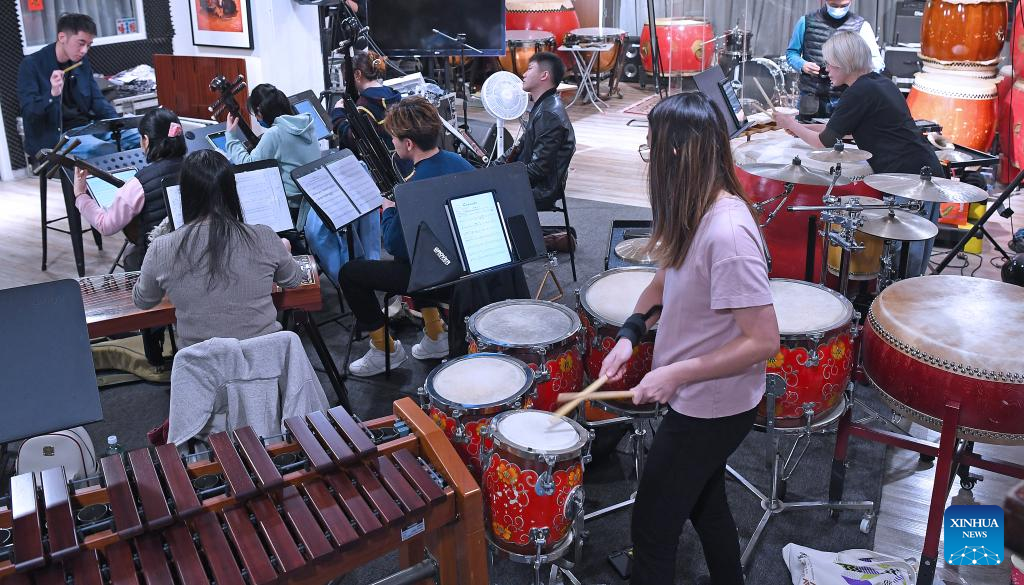
Members of the Hong Kong Gaudeamus Dunhuang Ensemble rehearse in Hong Kong, south China, Dec. 18, 2023. (Xinhua/Chen Duo)

Kam Shing-hei, the artistic coordinator and composer-in-residence of the Hong Kong Gaudeamus Dunhuang Ensemble, receives an interview with Xinhua in Hong Kong, south China, Dec. 16, 2023. (Xinhua/Chen Duo)
Edit:董麗娜
The copyright of the article and the picture belongs to the original author. If there is any infringement, please contact to delete it